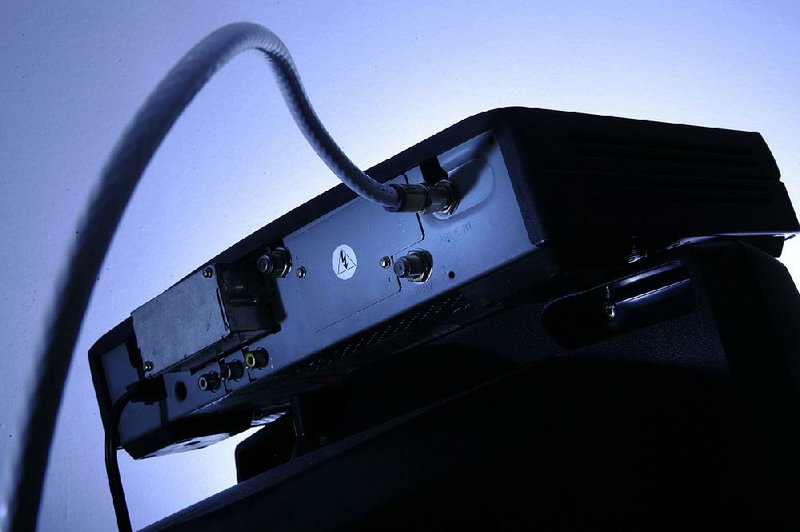NEW YORK -- Not that long ago, the clunky cable box looked like it was on its way out. The federal government was pressuring cable companies to open up their near-monopoly on boxes to more competition, and industry leader Comcast promised apps that could render some boxes obsolete.
That was then. Today, the vast majority of customers still need to rent a box to get full service from cable providers, and those box-replacing apps remain elusive.
In 2015, tech companies and consumer advocates wanted the Federal Communications Commission to let customers buy a cable box, sparing them the expense of leasing from cable companies for about $6 and up a month.
The cable industry and Hollywood hated the FCC's February 2016 plan to "unlock the box." They pointed out that TV-watching apps were already available and laid out an industry proposal for new apps that could replace cable boxes.
The FCC's proposed rules languished ahead of the 2016 election. Afterward, President Donald Trump's new FCC chairman, Ajit Pai, shelved them permanently.
The industry is no longer pushing its app proposal with the FCC, said Brian Dietz, a spokesman for the National Cable and Telecommunications Association, a cable lobby group. And he noted that some cable and satellite companies have introduced apps that let customers watch video without a cable box.
But most cable TV customers still need a box. The industry has little motivation to get rid of rented cable boxes or to keep its promises without pressure from regulators, said John Bergmayer, senior counsel of the public advocacy group Public Knowledge, in a filing to the FCC.
Comcast said in April 2016 that it was working with Roku and Samsung to develop apps that, later that year, could replace cable boxes. And it did start testing a Roku app in January, although customers still need a cable box while the service is in its testing phase. One more drawback: Using the Roku app won't be free if customers want it to work with more than one TV.
The Samsung app remains under development.
In 2015, Charter and Time Warner Cable started offering apps that could replace cable boxes in some markets. Nearly two years later, Charter says it's now testing such an app, Spectrum Stream, in nearly all markets. Charter bought Time Warner Cable in 2016, seven years after it was spun off from Time Warner Inc.
When the app was requested in New York City, a customer service representative pushed a more expensive traditional "triple play" TV, Internet and phone package instead.
AT&T, the owner of DirecTV, and Verizon have no apps that can replace boxes entirely for traditional cable and satellite TV service.
Separately, in 2015, Comcast offered a box-free cable service in Boston called Stream, designed for phones, tablets and computers and aimed at younger users. At the time, the company said it would roll out to all users by early 2016. Stream remains limited to Boston and Chicago, although Comcast said Wednesday that it's going to roll out a revamp, "Instant TV," aimed at digital users, in the second half of the year.
The company says net neutrality rules and regulators under President Barack Obama's administration hindered Stream's rollout. It wants the FCC to spike these rules, which bar Internet providers from favoring their own content.
The cable lobby points out that there are plenty of box-free TV apps available. Like Comcast's Stream, they're just not really aimed at the 94 million traditional cable and satellite customers stuck with box fees. They're for so-called cord cutters.
Online-cable services from Dish, Sony, Hulu and YouTube let subscribers watch live TV and record it for later. AT&T's DirecTV Now's DVR hasn't launched yet.
These services don't fully replace traditional cable service. Major channels aren't always available, there have been some service quality glitches, and they've only attracted an estimated few million subscribers.
To watch Internet-based TV on a TV, viewers usually need a gadget like a Roku, a Chromecast stick or Apple TV. These don't have monthly fees like cable boxes do.
Even without these apps made broadly available, Comcast has been able to draw video customers via its upgraded cable-box system, X1, which has integrated Netflix and is expected to add YouTube. It also has customers willing to pay for more than one service.
In the second quarter, Comcast lost 34,000 video customers, a deeper loss than the same period last year. It added customers for the full year in 2016, its first annual increase in a decade. Overall, cable and satellite TV have lost 4 million customers over the past two years, said research firm SNL Kagan.
SundayMonday Business on 07/31/2017
